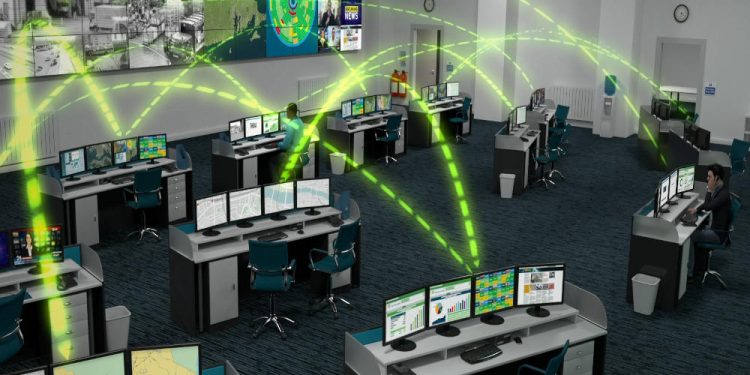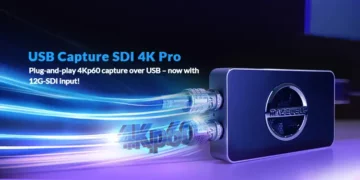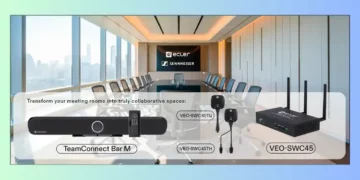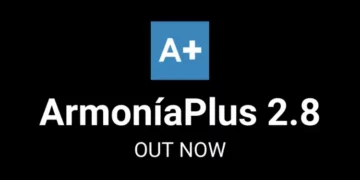The best decisions are based on the best data – with the challenges of the past two years demonstrating how vital it is to collate and share accurate information. Critical decisions are based on information available, so it makes absolute sense to make these decisions with as much relevant information as possible, whether that’s from camera feeds, news sources or other dedicated information sources.
This applies as much to companies and organizations as it does to emergency services and governments.
The control rooms of today are far more advanced and intricate than ten years ago, when the traditional large video wall looked out across individual workstations, with information collated to view on the large, single canvas.
Today, the number of sources and feeds coming into a control room is likely to be dozens, if not hundreds. Add the need to manage and share this content to the right people, across numerous displays and workstations (or even locations) and the challenges become very real.
Being able to transform any video wall display, instantly, for different emergency situations is now standard practice in many mission-critical and emergency control rooms. Having a rigid display on a video wall is underutilizing what is possible for maximum efficiency. Anything is now possible for today’s displays, from carousel windows showing security feeds, to auto-source switching when emergencies happen.
It’s an area where UK-based video processing specialists Datapath has excelled. Their hardware and software are used in Presidential palaces and defence hubs across the world and in businesses both large and small, in every continent.
The company’s Chief Technology Officer, John Storey, has been developing video processing technology for over 30 years. With a wealth of patents to his name and unparalleled experience in transferring video data, he explains where he thinks Control Room operation is heading, and what we can expect technology to deliver in the near future and beyond.
“The one thing that we can say is that what hasn’t changed is the fundamental role of a control room, that its purpose is still, after all this time, to bring lots of visual information together, to present that to operators so they can make informed decisions,” he says.
“That part of it is a constant. What has changed is the way that information is brought in and how it’s disseminated and shared. So, if you go right back, originally sharing was all about putting everything on one large canvas – the control wall. And sharing meant being in the same room as that wall. So that was as far as it went.”
Today’s technology means that system integrators and operators are no longer limited to the constraints of matrix switches, with networked systems bringing a level of flexibility not previously seen.
“As media has become more routable – and that’s very much thanks to AV over IP – you can bring that information together in front of those operators in many different ways,” adds Storey. “And with those advances in display technology, a lot of that can now be shared at operator workstations, and beyond if necessary.”
To meet the needs for the growing complexity in Control Room environments, Datapath has brought to market a platform that is as suitable for modest control rooms as it is to large, multi-source and multi-site organizations – able to design, manage and monitor entire systems from a single interface.
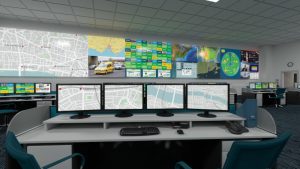
Named Aetria, this platform provides a central interface for all configuration and control, bringing numerous benefits to efficiency, reliability, and the ability for full and fluid collaboration.
Storey explains: “We have developed a solution that allows these workstations to operate as their own ‘personal video wall’ – displaying any content as they see fit – as well as being able to share anything to any display in the Control Room environment, or even externally.”
Quite clearly, the need for pristine quality video is paramount on all displays – as mentioned earlier, it’s the detail that can sometimes be the difference in vital decision making.
Storey and his team have developed a world-first technology that allows optimum quality video to be shared over 1Gb and 10Gb networks simultaneously, with no visual impact on latency and image quality. A 4K video source can be viewed and shared in full quality 4K, while also being transferred in HD more widely across a low-bandwidth network, for example.
Whilst moving data over IP networks promises new levels of flexibility, it also brings significant security and deployment considerations. Squeezing content over an IP network brings visual quality considerations, and perhaps most importantly for Command and Control, latency issues. Unless the use of encoded video streams (typically H.264/5) for the primary control aspect is immediately written out, the high encoding latency makes real-time ‘control’ clunky and difficult to use in practice. The commoditisation of 10Gb networking components now allows uncompressed or ‘visually lossless’ compression techniques to be employed that don’t incur the same latency penalty.
“The ability to securely share anything, anywhere is the objective here,” adds Storey. “To different workstations, offices, or even buildings. We have managed that with imperceptible impact on latency, and zero impact on video quality.”
Clearly, data security in the control room is vital, and end-users need to know that their systems are as safe as possible. With Datapath’s Aetria solution, security is built-in. All connections are secured with Enterprise-grade AES encryption, and user sessions and APIs are secured with TLS encryption. Finally, the role-based User Rights Management functionality can be used standalone or integrated with an existing enterprise identity and access management platform.
For more on Datapath and their Aetria platform for Command and Control rooms, visit www.Datapath.co.uk/aetria











